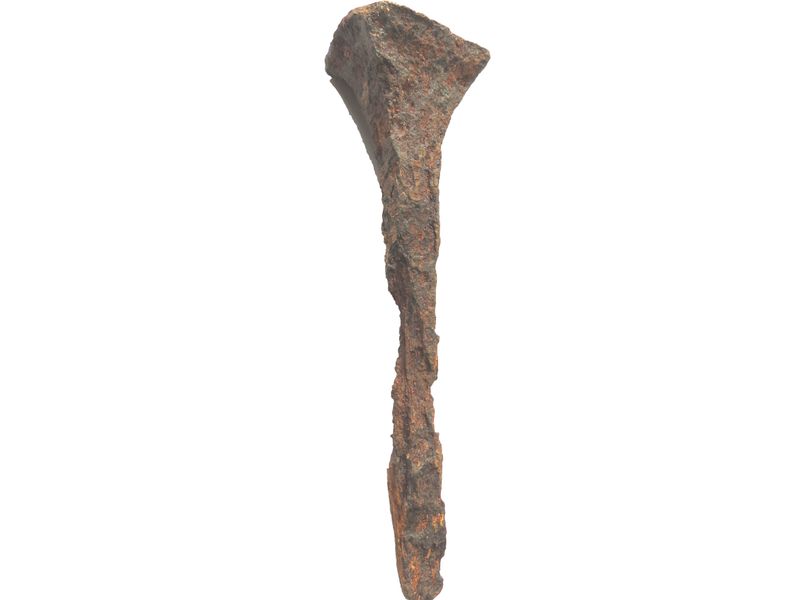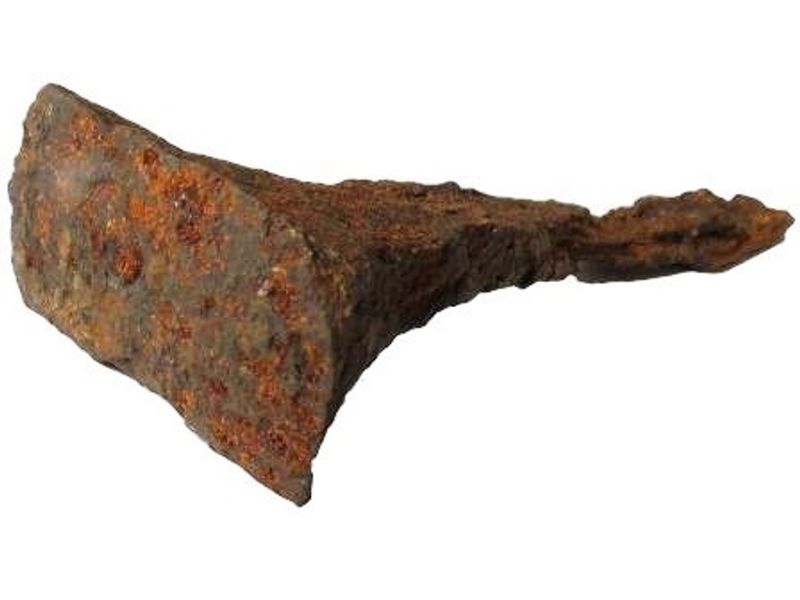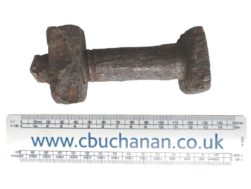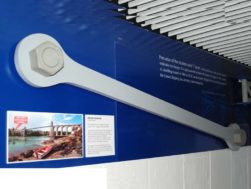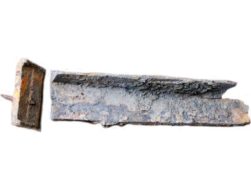Description
Malleable iron spike to secure the ends of adjoining iron plate rails on the Laigh Milton Viaduct on the Kilmarnock & Troon Railway. The nail has a square chamfered head which was hammered through a pre-formed chamfered notch in adjoining castings into an oak plug located beneath within a 2 in (51 mm) diameter hole in the centre of a stone block. Each block measured about a foot (0.3 m) square and 9 in (0.23 m) deep. See image for position of nail – centre left and bottom left.
This object was found during the Laigh Milton Viaduct Conservation Project (1995-1996). The viaduct, believed to be the world’s oldest on a public railway, was the work of leading civil engineer William Jessop. The double-track, horse-operated railway was opened in 1812, mainly for the export of coal, although it soon carried passengers. In 1816 it was the first railway in Scotland to operate with a Stephenson steam locomotive; nine years before the Stockton & Darlington.
Numerous significant railway relics were found during the restoration and this is just one of a number of them donated to ICE Scotland Museum.
For a detailed description of the conservation works click here.
Professor Roland Paxton wrote a paper for the Journal Historical Studies in Civil Engineering of the Japan Society of Civil Engineers. To read the paper click here.
For a general description and images of early cast iron plate railways see https://tringlocalhistory.org.uk/Railway/c03_track.htm.
For a film of the restoration works click here.
For an article on the history of the Kilmarnock & Troon Railway written by John Yellowlees in the Scotsman newspaper (dated 25 August 2022) click here.

